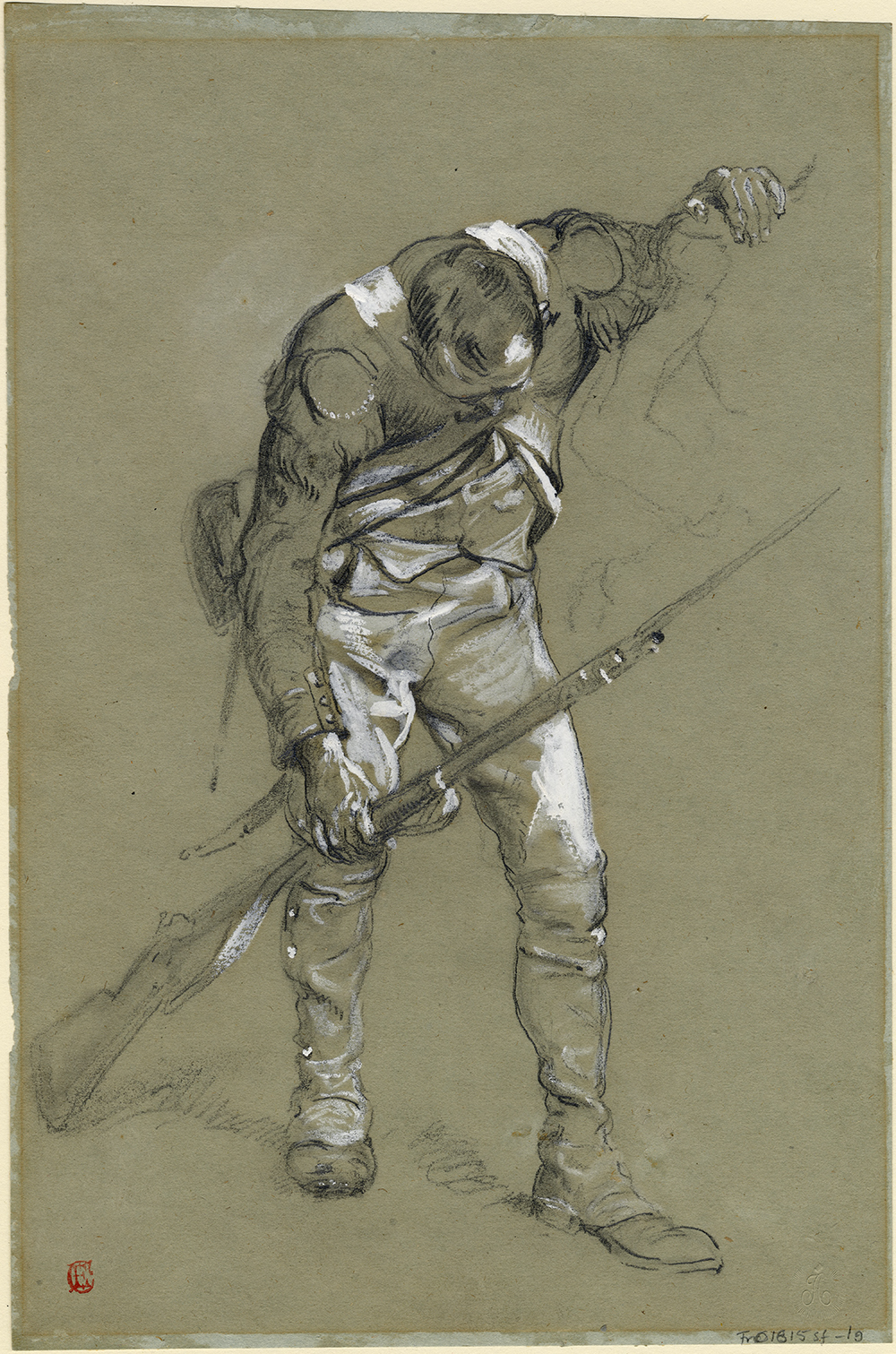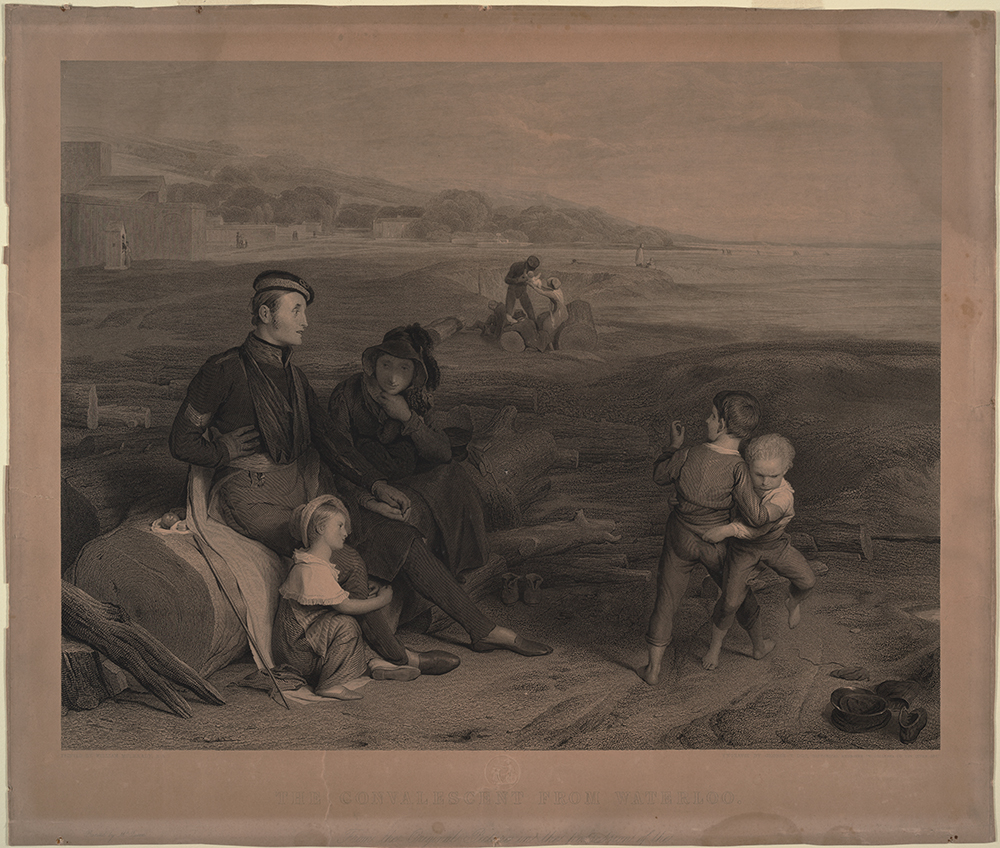The Aftermath


The battle of waterloo was a devastating event for the armies involved as well as the village itself. The combined number of men killed or wounded reached nearly 50,000, with close to 25,000 casualties on the French side and approximately 23,000 for the Allied army. The normally pristine and pastoral fields and farmlands of northern Belgium were scorched from battle and riddled with wreckage. Structures like the Chateau d’Hougoumont, a large farmhouse that was central to the combat, incurred great damage and still bear the scars today. Even several days after the fighting ceased, bodies still littered the landscape, dead or wounded beyond the possibility of medical assistance. The aftermath of the battle, with the symbolic meeting of Wellington and Blücher at La Belle Alliance amidst the dead and dying, began the long process of political change in Europe, which resulted in several decades of peace.
Items on Display
-
Napoleon nach Ausgang der Schlacht Waterloo
K.F. Fuchs
c. 1850
Gouache 54.1 x 68.9 cm
At the end of the day on June 18th, 1815, Napoleon, mounted on his horse, makes his way through a mass of dead, wounded, and retreating soldiers. This gouache is a copy of Charles Auguste Steuben’s well-known picture. -
A selection of two scenes from Battle of Waterloo: Illustrated in Eight Different Points of View
John Heaviside Clark (artist)
M. Dubourg (engraver)
London, Edward Orme, 1816
Hand-colored aquatints 22.5 x 27.5 cm
These prints show both the immediate aftermath of the battle on the field of combat and the reception of the battle heroes upon their return to London. Civilians and family members assist the wounded survivors. This publication of fictional scenes is arranged with stanzas of Walter Scott's long poem The Field of Waterloo paired with each image. -
List of Regiments under the Command of Field Marshal Duke Wellington, on Sunday, June 18, 1815; and the Total Loss of the British and Hanoverians, from June 16th, to 26th, 1815
London, for J. Booth, 1815
This volume lists the number of dead, wounded, or missing from each regiment within the Anglo-Allied Army. It separates officers from rank and file soldiers. -
Napoleon the Great surrendering himself up to the generosity of the British Nation, on board the Bellerophone, July 15, 1815
William Heath (artist)
Thomas Sutherland (engraver)
London, J. Jenkins, 1816
Hand-colored aquatint 37.7 x 29.8 cm
After Napoelon's defeat at Waterloo, his supporters in France turned against him. On June 22nd, 1815, he abdicated his throne in favor of his son. By July 8th, the victorious European powers ensured that King Louis XVIII’s rule was restored for the second time. Napoleon's Hundred Days had come to an end. Receiving word of Prussian orders to capture him dead or alive, Napoleon fled to the port of Rochefort. After several thwarted escape attempts, he requested protection from the Prince Regent of Britain in a letter dated July 13th, and gained asylum from the British Army during negotiations on board the Bellerophone. This print depicts the scene of this surrender, with text from Napoleon's letter reproduced below the image. -
Die Transportierung des Napoleon Buonaparte nach der Insel St. Helena
Artist unknown
Germany?, Ant. Paterno. c. 1816
Hand-colored engraving 18.7 x 23.2 cm
After his surrender, Napoleon was permanently exiled to Saint Helena, a remote island in the South Atlantic, where he died in 1821 at the age of 51. This print shows Napoleon on board the Bellerophone amid British officers, soldiers, and sailors during his transportation. Jamestown, the capital of St. Helena is visible in the background.
